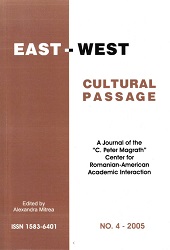Sign Typologies
Sign Typologies
Author(s): Sorin UngureanSubject(s): Sociology of Religion
Published by: Editura Universitatii LUCIAN BLAGA din Sibiu
Keywords: arbitrariness; conventionality; icon; index; medium/channel; Charles Sanders Peirce; Ferdinand de Saussure; sign; symbol;
Summary/Abstract: Sign theory is one of those sciences that may diverge significantly from the lay perception of its subject matter. Semiotics (AngloSaxon schools of thought emerged in emulation of Charles Sanders Peirce, 1839–1914) and semiology (Continental schools, such as Structuralism, inspired by Swiss theoretician Ferdinand de Saussure, 1857–1913) have each put together some more or less rigorous systems of classification. Yet, of the two founders of the modern science of signs, it was Peirce who was drawn to typologies, and his contribution is still quintessentially accepted in research. It results into three major sign categories, among which we discriminate via degrees of arbitrariness: icon, index, and symbol (which further break down into subtypes, based on conventionality, code, medium, channel used, etc). For sign analysis or understanding of any kind – from the hermeneutics of early Christian texts to the search-engine management on the Internet – typology is an essential instrument. Apart from that, this essay investigates the contrast between the natural condition of sign-users (engaged in incessant, routine activity) and the particular condition of semioticians (who find motivation in the universality of signs while overcoming certain inherent limitations). An attempt is made to create a working typology, from examples that go past the expected limits of human interaction.
Journal: East-West Cultural Passage
- Issue Year: 14/2014
- Issue No: 2
- Page Range: 175-189
- Page Count: 15
- Language: English
- Content File-PDF

